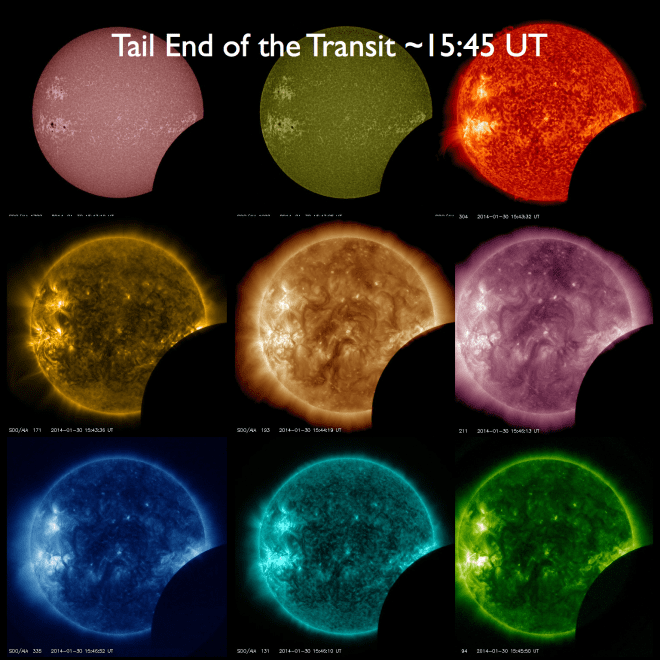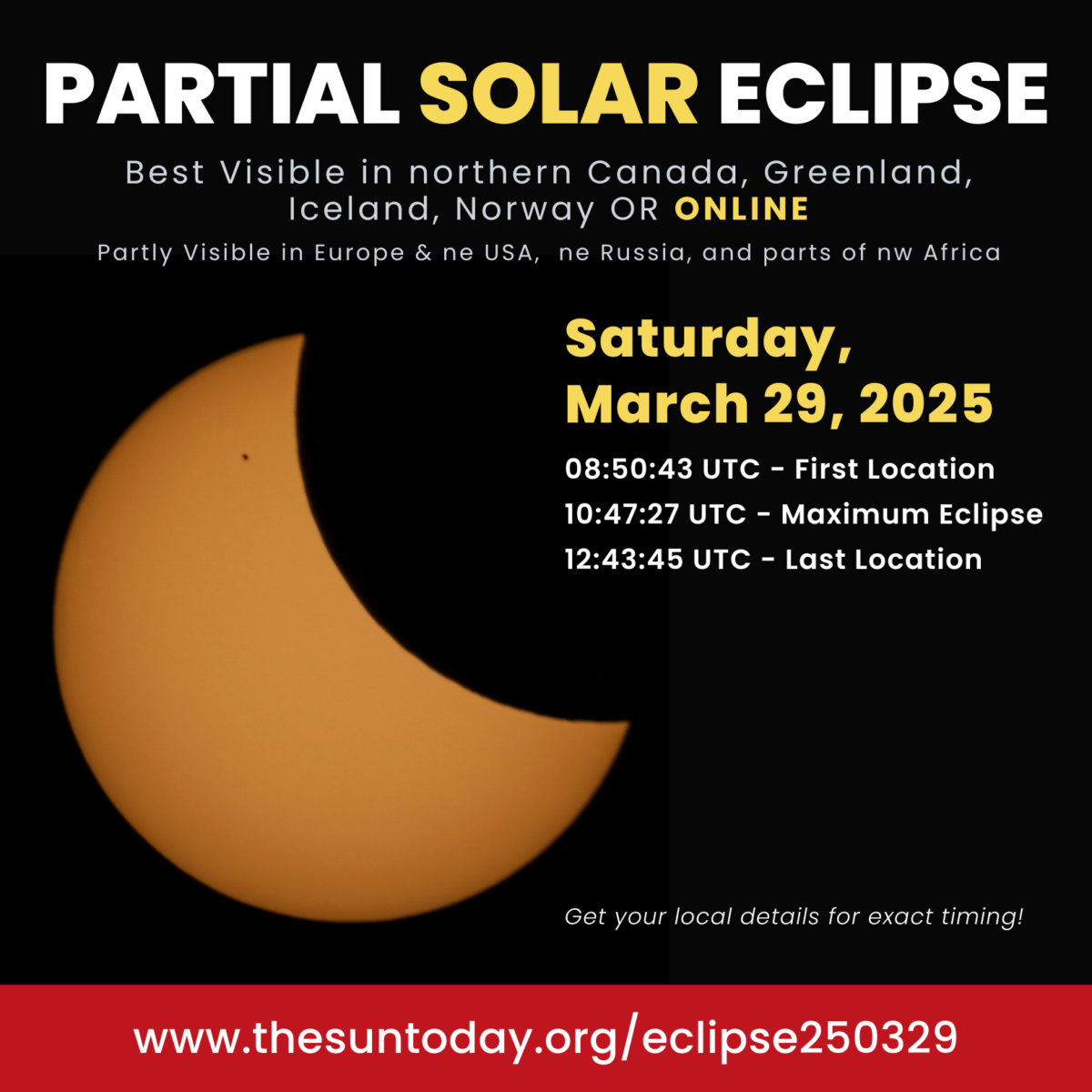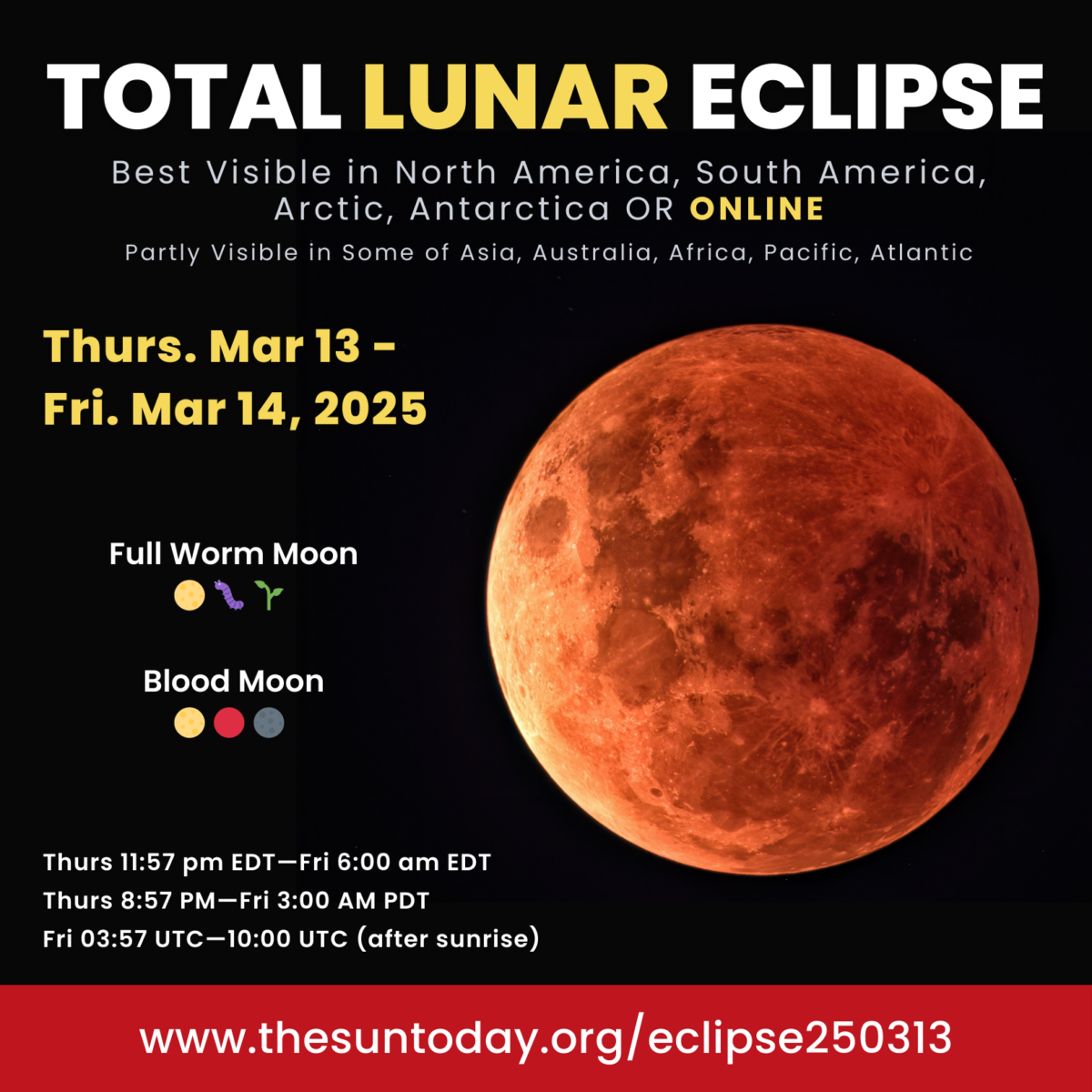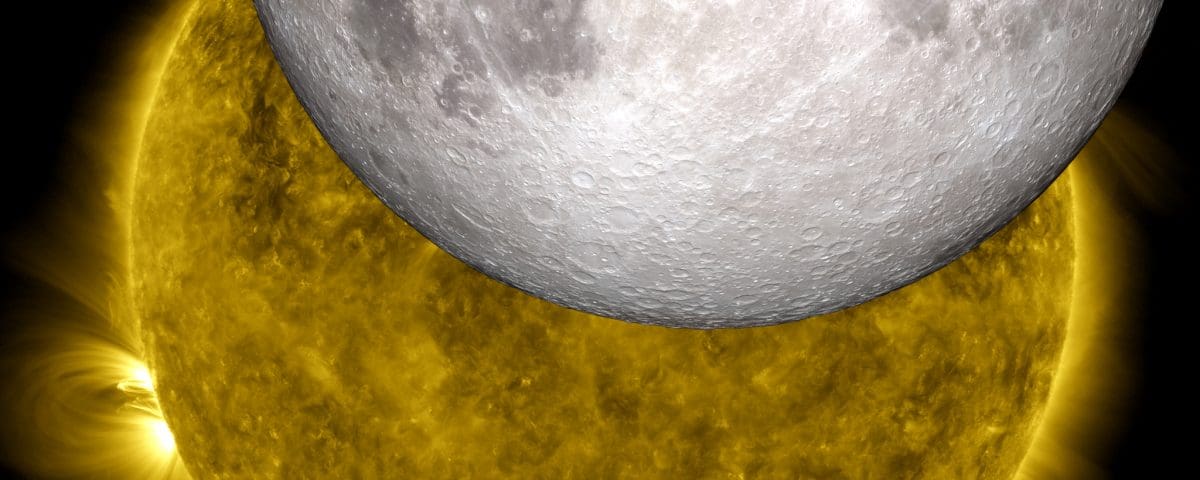
UPDATES
16:17 UT (11:17 UT) – The transit ends with a bang! – an M6.6 flare peaked at 16:11 from AR11967. These images are from just before the flare peak at around 16:00 UT (11:00 EST) again in all 9 SDO/AIA wavelengths.
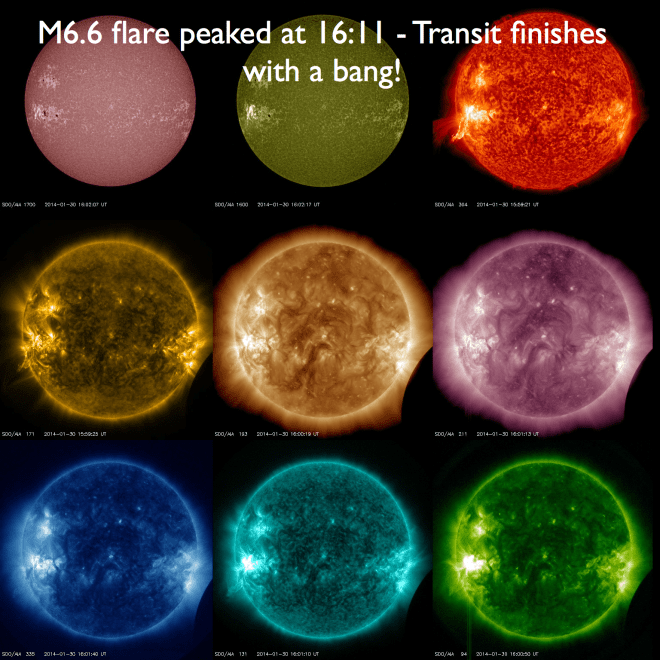
The transit ends with a bang!, an M6.6 flare peaked at 16:11 from AR11967. These images are from just before the flare peak at around 16:00 UT (11:00 EST) again in all 9 SDO/AIA wavelengths.
16:06 UT (11:06 EST) – Tail end of the transit ~15:45 UT, roughly 11 minutes left, shown with all 9 SDO/AIA wavelengths.
14:45 UT (9:45 EST) – Roughly 1 hour into the transit ~14:30 UT, shown with all 9 SDO/AIA wavelengths.
14:03 UT (9:03 EST) – The beginning of the transit in all 9 SDO/AIA wavelengths from ~13:45 UT.
13:44 UT (8:44 EST) – A first glimpse of the moon just before the transit began. Seen in the SDO/AIA 211 angstrom camera.
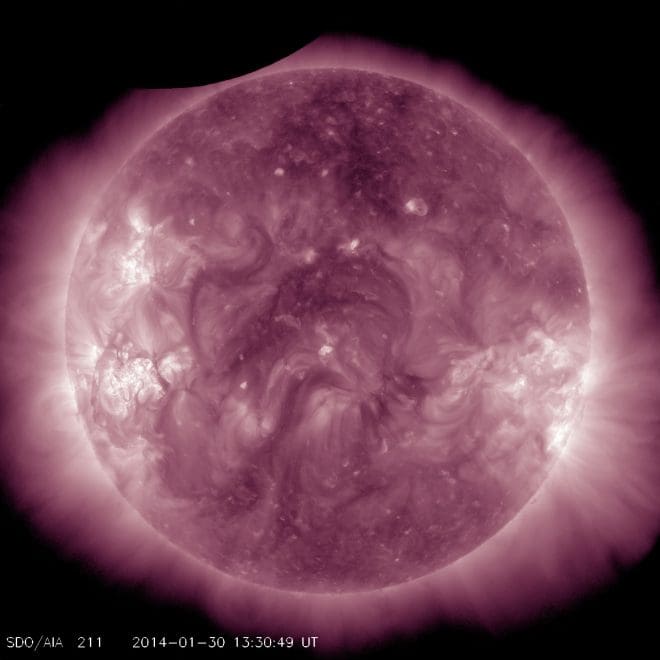
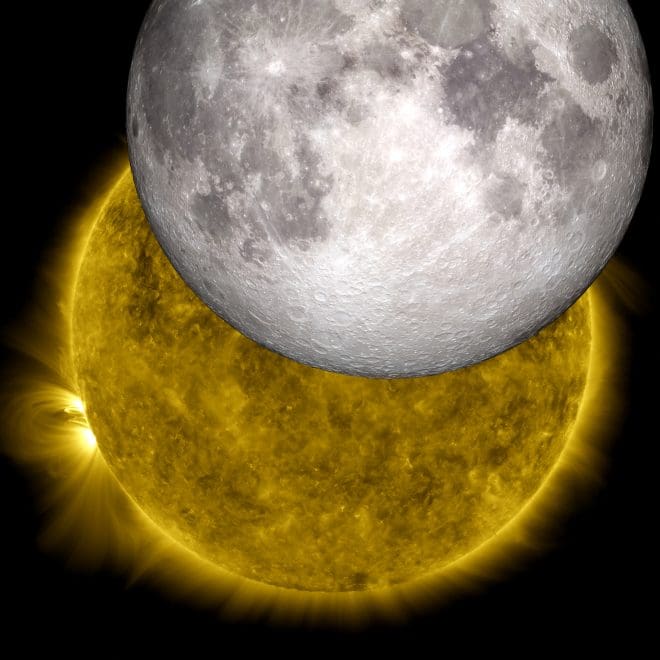
This image is a view of the sun captured by NASA’s Solar Dynamics Observatory on Oct. 7, 2010, while partially obscured by the moon. A close look at the crisp horizon of the moon against the sun shows the outline of lunar mountains. A model of the moon from NASA’s Lunar Reconnaissance Orbiter has been inserted into the picture, showing how perfectly the moon’s true topology fits into the shadow observed by SDO.
Credit: NASA/SDO/LRO/GSFC
SDO observes an extra long lunar transit – stay tuned for data starting after 13:31 UT (8:31 EST).
Lunar transits are not uncommon for the Solar Dynamics Observatory (SDO).
From an earlier post – “Observations of lunar transits are very useful for SDO. They are used to better understand SDO’s pointing. Also, transits allow the SDO scientists to fine tune the telescopes. One problem with telescopes is stray light. If you look at the lunar disk it should be completely black. Close inspection reveals that is it not completely black. This is because a small amount of light not directly from the sun has made its way into the inside of the telescope. By studying how much the lunar disk deviates from being black, SDO scientists can measure and ultimately account for how much unwanted scattered light is making its way into the telescope.”
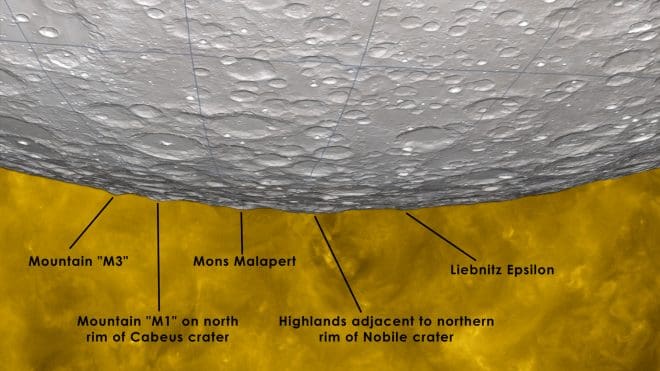
This is an up close shot of two NASA images: An image rendered from a model of the moon from the Lunar Reconnaissance Orbiter overlaid onto an image of the sun from the Solar Dynamics Observatory, during a lunar transit as seen by SDO on Oct. 7, 2010. The various features of the moon’s horizon are labeled.
Credit: NASA/SDO/LRO/GSFC
The SDO mission has observed many examples of the moon moving in front of the sun from the spacecraft’s viewpoint. Some transits are around 30 minutes but these transits are usually not longer than 1.5 hours. On January 30, 2014, from 13:31 – 15:56 UT (8:31 – 10:56 EST) SDO will observe an especially long lunar transit – that’s a duration of around 2.5 hours.
Here is a simulation showing the predicted observation of SDO’s extra long transit observation.
http://youtu.be/p8BY6JzpIU8
credit: NASA/SDO/Olivier Fehr


